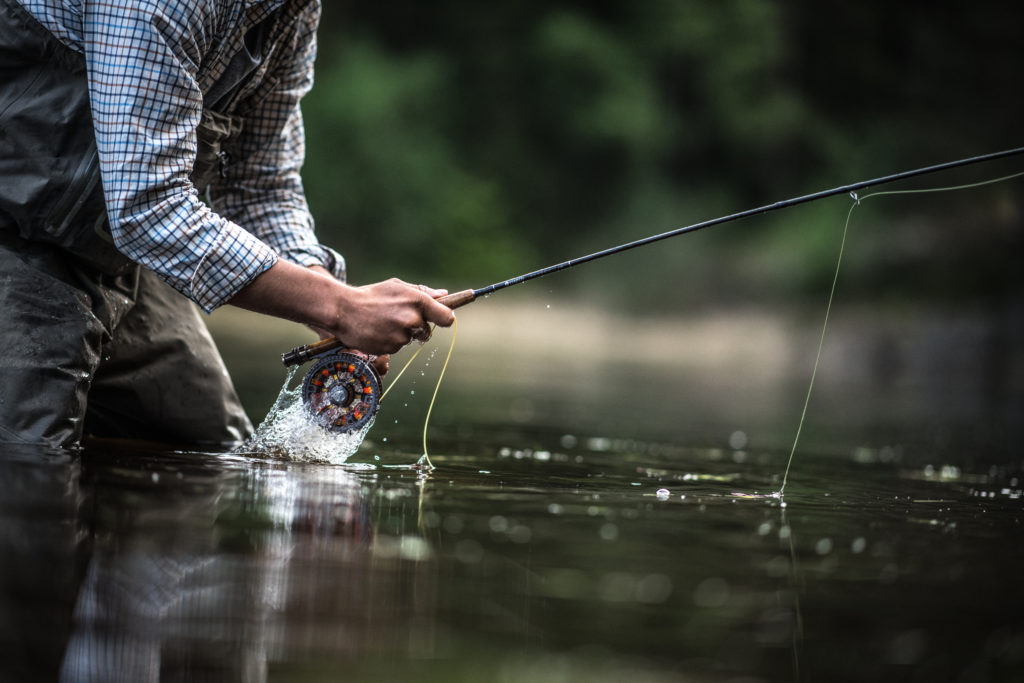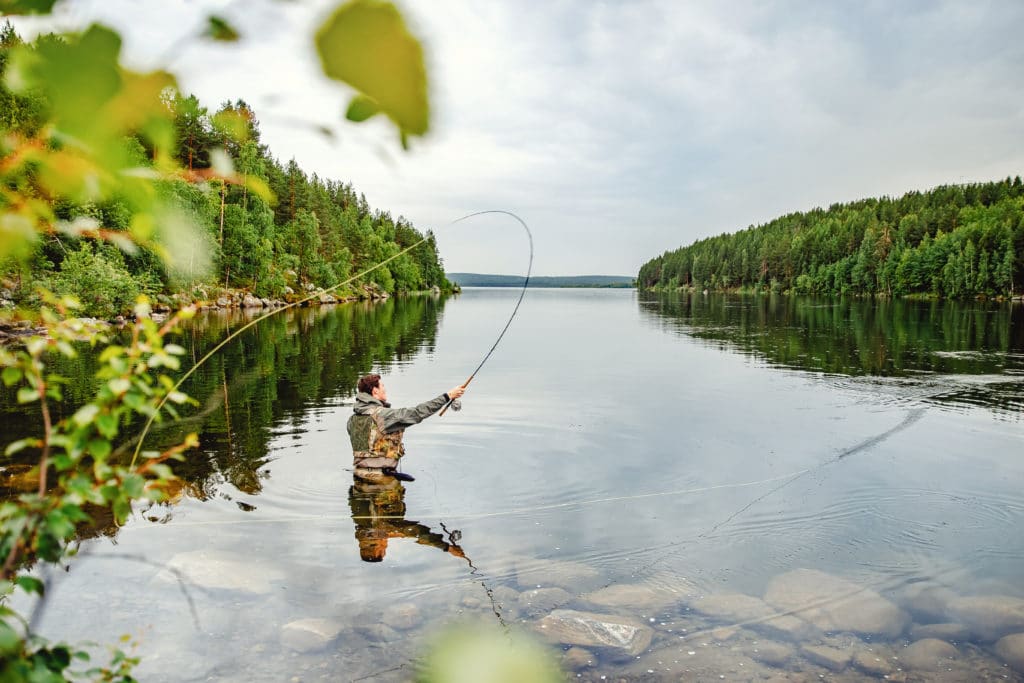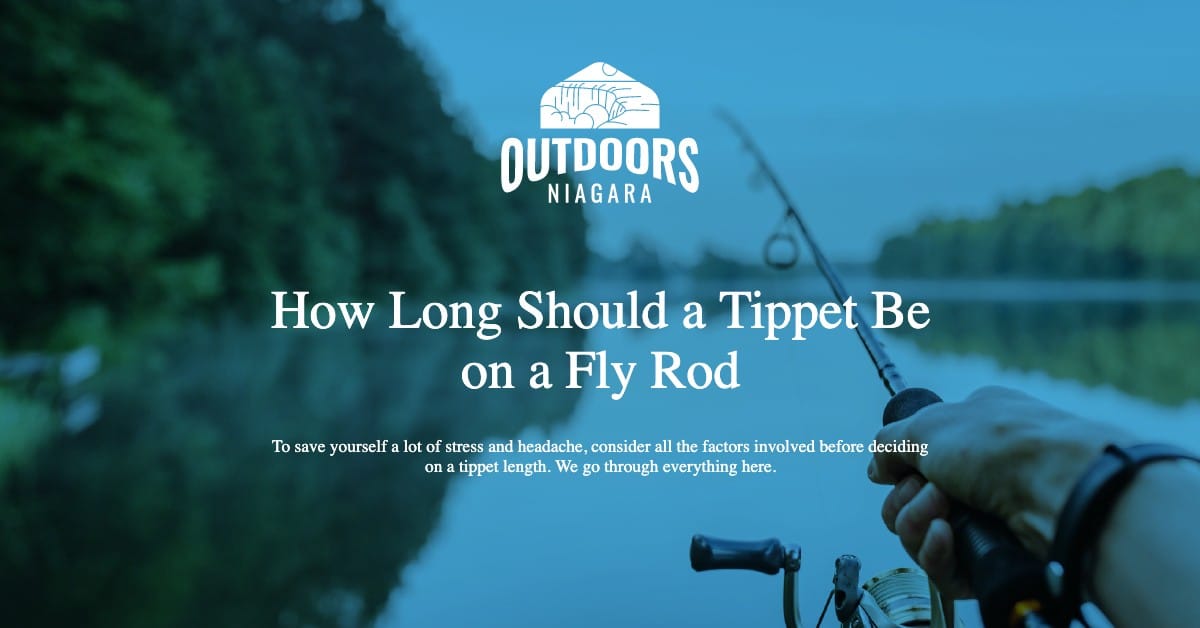Fly fishing is an angling method that uses an artificial fly cast with a fly rod and a fly line to catch fish.
The flies may resemble baitfish, invertebrates, or other organisms.
A fly fishing gear setup has a fly rod, reel, line, and flies.
Connecting the flies to your line requires a tippet and leader.

Contents
Purpose of Leaders and Tippets
Fly fishing tippets and leaders come in different shapes, sizes, colors, and materials.
The first primary purpose of the leader and tippet is to connect your thick, colored line to the fly you’re trying to give the fish with a material that won’t scare them away.
They serve as a connection between the fly line and the fish.
The second purpose of fishing leaders and tippets is to complete energy transfer.
An energy transfer is built up from the fly line to the casting stroke to the line and down to the fly.
Leaders and tippets complete this energy flow and allow the line to roll over and straighten itself out.
There are different tippets and leaders manufactured to perform these two purposes.
Tippets and leaders are a part of your underwater presentation.
A good cast, balanced rod, and invisible materials will help your fly look enticing to fish.

What are Leaders and Tippets?
A fishing leader is a length of material or materials that connect the fly to the line.
There are both tapered leaders and level leaders.
Some come in one piece, while others are made by knotting shorter pieces together, leaving them knotted.
Leaders may also be solid, braided, or furled.
Conversely, tippets are the materials used to build leaders up from scratch or to adjust or repair the current leader.
Tippets are often called “tippet material” and come on spools.
The sizes of tippets vary and they are measured in Xs, like 1X tippet, 2X tippet, 5X tippet, etc.
They are also measured in pounds breaking strength.
Leaders that are bought in stores are also measured in Xs.
The X for tapered leaders indicates the diameter of the narrowest part of the leader.
The higher the X number, the thinner the diameter.
So, it is crucial to choose the correct diameter leader.
Types of Leaders and Tippets
Different people have different opinions on what type of leader should be used when fishing.
One can target a range of species when fly fishing, and as such, there are a wide variety of materials and material combinations to choose from when searching for a leader and tippet.
There are three types of leader and tippet material: monofilament, fluorocarbon, and bite wire.
Monofilament (Nylon)
They are referred to as “mono.” These leaders have more stretch than the others and they float effortlessly.
They also sink slower than other types of lines. Monofilament leaders and tippets are inexpensive and can be found in all tackle shops.
Fluorocarbon
This is a reliable tippet and leader material choice. It is not as stretchy and it sinks a little faster than mono.
The significant advantage it has over mono is that it is more invisible and is excellent for catching fish that spook easily.
Fluorocarbon is more expensive than mono, but its lesser visibility makes the extra cost worth it.
Bite wire
Bite wire is very visible underwater, quite expensive, and is a rigid material to handle.
Its primary purpose is to prevent toothy predators from biting through your line.
Bite wire doesn’t involve stealth or stalk ability.
But when fishing for toothy fish in freshwater and saltwater, a bite wire is the best way to go.
Choosing the Right Leader
Three factors should be considered when choosing a fishing leader:
- The length of the leader
- The diameter of the butt section
- The diameter of the tippet
Length of the leader
Three factors determine your fly leader’s length: the species you’re fishing for, the type of fly line used, and the water condition.
Sinking lines are fished with short leaders so the fly line can sink the fly more quickly and remain in the water column for an extended period.
Floating lines are usually used with longer leaders between 7 and 12 feet long.
Shorter leaders are usually used in murky water with poor visibility.
Longer leaders are used with shallow and clearer water.
Also, the more line or leader-shy a fish, the longer the leader should be.
Butt section size
The butt section must be the right size.
The right leader butt section will aid in a smooth transition from fly line to leader.
The wrong leader butt diameter will result in leaders jerking or failing to layout smoothly.
Tippet size
The fly size is essential when determining what tippet size to use.
Small flies need small diameter tippets and large flies need large diameter tippets to work.
How long should a Tippet be on a Fly Rod?
There is no exact size for a tippet.
Expert anglers advise that the length of your tippet corresponds with the length of your leader.
For example, if you have a 10 to 12-foot leader, your tippet should be 2 to 4 feet.
If your leader is longer than that, your tippet should be longer too.
Tippets are very thin, so they tend to wear out fast.
To avoid changing your line all the time, go for a tippet of the right length.
When choosing a tippet length, you should also consider your fishing style.
Dry fishing tolerates longer tippets than wet fishing.
Final Thoughts
To save yourself a lot of stress and headache, consider all the factors involved before deciding on a tippet length.
When dry fly fishing, you could pull off using a longer tippet, as long as it does not affect the way you cast.
Monofilament or nylon and fluorocarbon tippets would be excellent when used in the right situations.
After deciding on the material, you will have to decide on the length.
It’s important to note that detaching or attaching tippets from leaders is challenging.
If you find yourself with a tippet that is too long, simply cut it down to the size you want.







